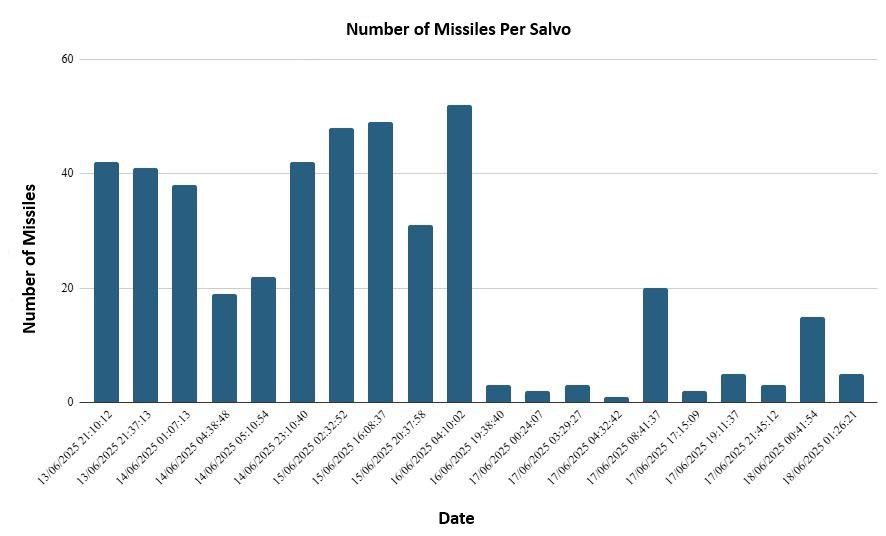Iran Update, September 4, 2025
Islamic Revolutionary Guards Corps (IRGC)-affiliated Tasnim News Agency proposed a series of steps on September 3 that it argued the Iranian regime should take to confront hybrid warfare.[1] The regime defines hybrid warfare as “the use of all domains of power, including information, electronic, cultural, social, and military operations, by hostile actors to destabilize Iran.”[2] The Tasnim report outlined the following three main areas that Iran must address to withstand hybrid warfare:
Redefining Governance Structures and Processes: Tasnim called for re-engineering Iran's governance system and warned that a centralized bureaucracy is too slow and brittle for hybrid war.[3] Tasnim urged the regime to create mechanisms to monitor internal divisions, accelerate bureaucratic processes, and provide more authority to governors and local officials. It argued that decentralized power would make governance more flexible and resilient, which would speed up the regime's responses to crises such as unrest, cyberattacks, or supply disruptions.
Reforming the Relationship Between the Regime and People: Tasnim called for the regime to treat the Iranian people as Iran's main strategic asset rather than dependents of the state.[4] It stressed that victory in hybrid war requires citizens to actively participate in governance, including via neighborhood security, the economy, and cultural resistance. Tasnim highlighted that small, agile grassroots groups involved with technology, media, and culture would counter stronger adversaries and shape public opinion so that people accept hardships as part of a larger struggle for independence and survival.
Developing Iran's “resistance economy:” Tasnim called for the regime to turn the economy into a “defensive stronghold.”[5] It emphasized the need to end dependence on crude oil sales, cut reliance on food imports and gas consumption, and enforce tight control over foreign exchange and trade. Tasnim also called for building long-term cooperation with Axis of Resistance members, neighboring states, and emerging powers such as Russia and China to secure essential goods and bypass Western economic pressure.
Tasnim also warned that adversaries use media narratives to target the minds and will of the people, which the outlet referred to as “narrative warfare.”[6] Tasnim’s call to prioritize narrative warfare is consistent with recent regime efforts to control domestic reporting on snapback sanctions.[7] Iranian officials have recently directed outlets to downplay the E3’s (the United Kingdom, France, and Germany) activation of the snapback mechanism and avoid negative portrayals of Iran's future.[8]
Iran continues to refuse to cooperate with the International Atomic Energy Agency (IAEA). A Western media journalist posted on X on September 3 that Iran proposed a new inspection arrangement to the IAEA on August 14 that would delay IAEA inspection requests for Fordow, Natanz, and the Esfahan Nuclear Technology Center (ENTC), which are the three major Iranian nuclear facilities that were struck by Israel and the United States during the Israel-Iran War. The Iranian proposal would allow Iran to determine how Iran's nuclear activities would be investigated.[14] Iran also revoked the accreditations of two experienced IAEA inspectors in August for mistakenly taking documents from Fordow to Vienna that reportedly described the facility's interior.[15] The IAEA stated that the revocation was unjustified because the documents did not include any information that would compromise the facility's security.[16] This comes after the Iranian parliament passed a law on June 25 suspending all cooperation with the IAEA.[17] IAEA Director General Grossi said on September 3 that Iran and the IAEA will hold another round of talks in the coming days to discuss resuming IAEA inspections at Iranian nuclear facilities, but it is unlikely that any agreement will be reached due to Iran's opposition.[18]
https://understandingwar.org/research/middle-east/iran-update-september-4-2025/
18JUN2025 This graphic from @Doron_Kadosh, an Israeli Army Radio correspondent, supports some of what we @criticalthreats and
@TheStudyofWar have been assessing: Iran may have suffered significant losses among its med-range ballistic missile launchers.

It is possible (and not mutually exclusive with the above) that Iran is shooting smaller salvos to minimize the number of launchers Israeli aircraft can find and destroy. Reminder: Iran fired at least a hundred missiles at once back in October 2024, and given the far more serious threat they now face (a threat to the regime itself), it is more likely that Iran is unable to fire large amounts of missiles rather than unwilling to do so.
https://x.com/brian_cartr/status/1935392563088798008
